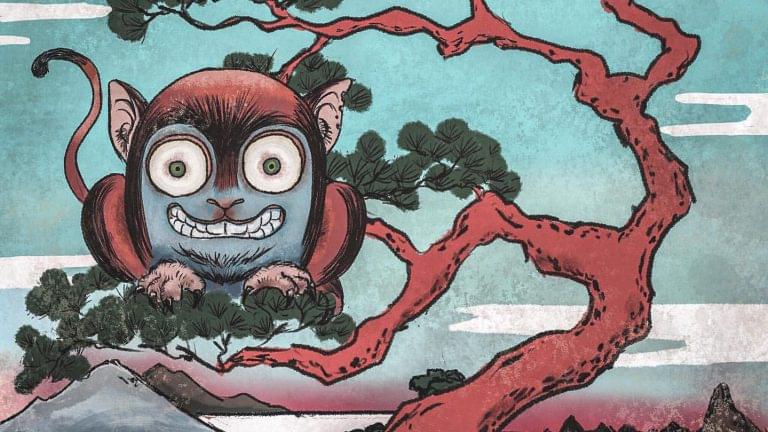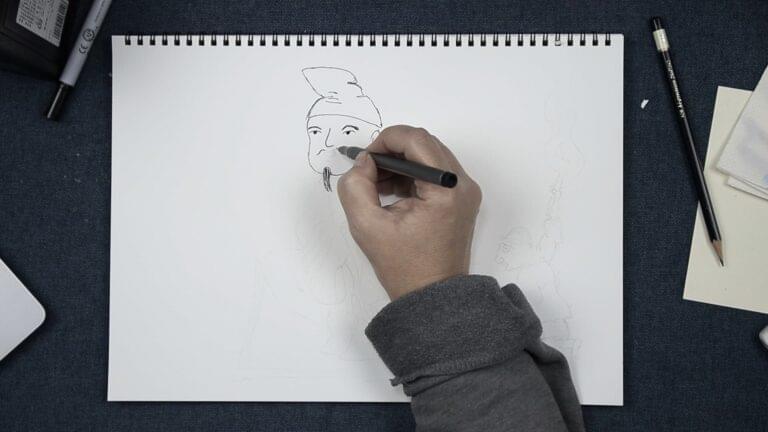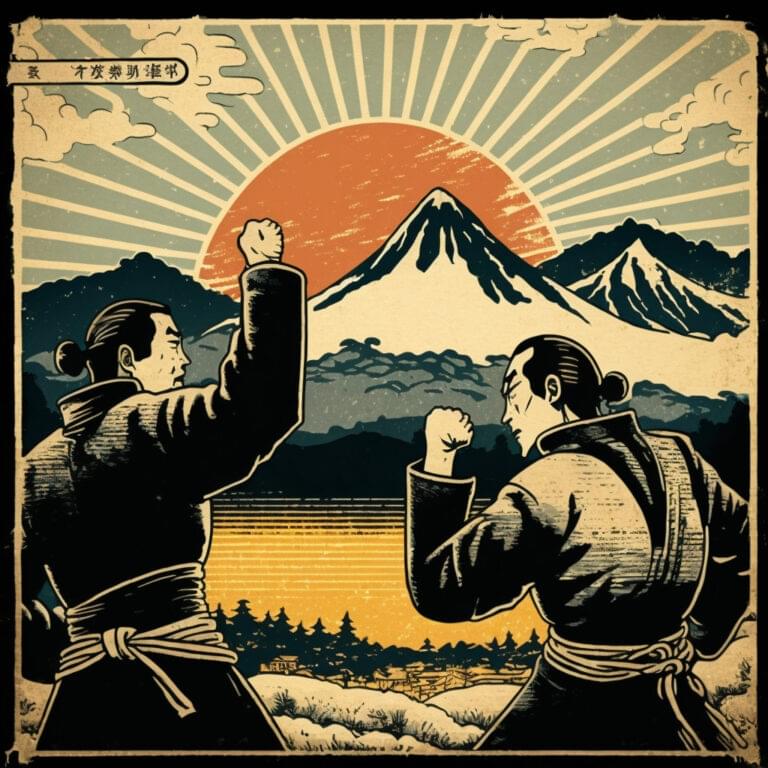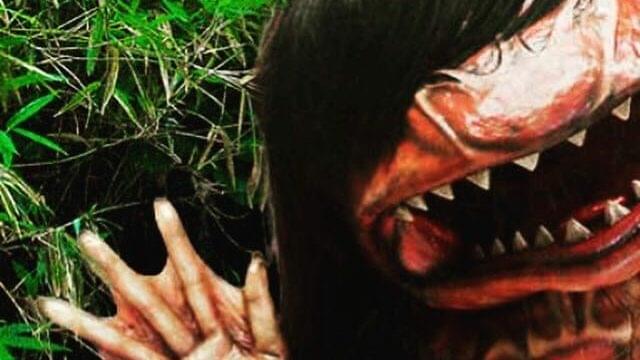[This post contains Amazon affiliate links. If you click on a link and make a purchase, I may receive a commission at no additional cost to you.]
Hey hey, this is Thersa Matsuura and you’re listening to Uncanny Japan.
How Do You Sleep?
I have something I need you to do. Right now think about your bed or your futon or perhaps the couch where you sleep every night and figure out which direction your head is pointing when you lie down. If you don’t know, you might want to use a compass – there’s probably one on your phone, or an app out there – or think about where the sun rises and sets compared to where you sleep and do some mental calculations to come up with it.
So when you sleep, is your pillow pointing west, south, east? Please don’t tell me it’s the north.
The Book of Japanese Folklore News
Hey hey, how are you? Keeping calm? Well, before I give you another thing or two to worry about – the dreaded north pillow and fan death – let me tell you the breaking news: The Book of Japanese Folklore: An Encyclopedia of the Spirits, Monsters, and Yokai of Japanese Myth by yours truly is officially out of my hands and will be off to the printers soon. Its release date is April 30th next year and you can get it by asking your local bookstore to pre order some copies (that would be awesome) or by searching for my name (Thersa Matsuura) on Simon and Schuster’s website, Barnes and Noble, Amazon, or Books a Million.
How I Learned about Kitamakura/North Pillow
Okay, let me give you a piece of my mother-in-law’s wisdom. I learned this lesson the hard way when one hot summer day she came over to visit. My son was still a baby and was napping peacefully on the tatami mat floor. He wasn’t too hot or too cold. No air conditioner or fan was blowing on him (I’ll tell you about fan death in a minute). Anyway, he had a thin blanket over his belly because bellies must be covered and I imagine he was smiling sweetly in his sleep, too. What could possibly be wrong with that?
Well, there was something wrong. Very wrong. He was sleeping with his head pointing toward the north. A very, very, very bad thing, I was told as much as she took the edges of the blanket he was on and turned him into a different direction.
She explained to me that he, we, everyone, should never sleep with our head facing in the north direction. It’s unlucky, invites misfortune and even death. This, she informed me, is how dead people sleep. Or since they’re dead, I don’t think sleep is the right word. They don’t so much sleep as lie there.
So here’s the custom: in Japan when someone dies and they’re still in the house – where they’ll stay for a few days – for the wake and visitors to pay their respects, the first thing that is done is move them so that their head is pointing north.
The Buddha’s Story
This is called kita makura (north pillow) and for centuries people in Japan believed and still believe it’s very bad luck for a living person to sleep this way.
Some go as far as to say, by sleeping in this position you’ll joubutsu 成仏. Jōbutsu, means to attain Buddhahood, realize enlightenment, or simply to become a Buddha. That sounds like a good thing, right? Wouldn’t it be nice if we could all attain enlightenment? But actually joubutsu has a double meaning. When someone dies, it is a very polite way of saying just that: they’re dead.
But this superstition doesn’t come from nowhere. There’s a reason for it.
When the historical Buddha, Gautama, died he lay down in a position called in Japanese: zuhoku mensai, or “head facing north, body facing west.” Basically he lay down on his right side, with his head facing north.
If you ever see a statue or image of the Buddha and he’s laying down looking peaceful, he’s not taking a nap. This is the symbolic representation of his death. It’s even got a name, parinirvana. Nirvana we all know means when you are enlightened and no longer bound to the wheel of life. Parinirvana is the death of someone who has attained nirvana.
How the Buddha Died
If I can take an aside here, real quick. Do you know how the Buddha died? Well, me neither. He lived and died before the common era, so we’ll never really know, but I learned in my Buddhist studies class in University that it was tainted pork that killed him. But I just learned there’s another theory…poisonous mushroom.
There’s an ancient text that describes the Buddha’s last meal prepared by a disciple who was also metal worker named Cunda. Two words that appear in this story are: sukara (pig or boar) and the word maddava (delicate, well liked, soft, tender). Depending on the interpretation, sukara maddava could mean tender pork or “what is liked by a boar,” which would probably mean mushrooms, truffles, or even edible black fungus.
That last reading might sound like a stretch, but when you think about how monastic rules prohibit monks from eating meat, – not to mention the Buddha wasn’t into killing anything – it makes more sense. The story continues to say the Buddha was serene even though he was experiencing great pain and dysentery. He told Cunda not to feel guilty about that last meal and told the others not to blame the poor metal worker. He said a lot of neat things, accepted two more disciples and then his skin started to shine. He went into a grove with his followers, lay down with his head facing north and entered parinirvana.
Two Japanese Superstitions
And because of that incident two superstitions were born in Japan: 1) Turn your deceased in the same direction when they pass and maybe that will give them a better chance at getting into paradise and 2) don’t sleep that way before you die, lest you bring bad luck and unintentionally invite an early death.
So that’s one line of thought that is still very much around today.
Real quick: There are some other interesting death traditions from different parts of Japan.
Other Death Superstitions
For example, in some places in Niigata Prefecture the deceased will be moved into another room first, then placed with the pillow to the north. Some areas actually remove the tatami the person was lying on believing they’ve become impure. In Kyoto there are areas that remove the tatami and rest the body on the bare floor underneath.
Here’s a little related story, something I learned during a karate competition that really stuck with me. Before going to fight (kumite) one of the students, a really nice lady, was getting ready to go out when the head instructor, the shihan, pointed at her and said, hidari mae, which means left on top.
I had no idea what he was talking about but she turned bright red and apologized and immediately untied her obi and turned around and fixed her outfit.
When you wear a kimono always, always make sure the left side is over or on top of the right side. Why? Because when a dead body is dressed the kimono has the right side over the left, the opposite. This poor woman had somehow in her nervousness dressed right over left. The joke was made after she fixed the mistake that she’d inadvertently resigned herself to die in the battle. Which was clever I thought. Of course it wasn’t a real fight to the death, but it was indicative of losing the fight. I can’t remember if she won or lost though.
Where with western clothes women and men have buttons on opposite sides, that’s not so in Japan. Both men and women, all alive people, wear their tops with the left side over the right. The other way is called 死装束 shini shouzoku or death attire. There’s also shiroshouzoku, which means white attire and that’s because the kimono the dear departed wear is very often all white.
Upside Down Kimono & Futon
There is another custom that is sometimes observed called sakasa kimono, or upside down kimono where the actual kimono of the deceased is draped over the body, but upside down, the neckline being toward the feet. The kakebuton or top futon is also often turned upside down as well. So it looks like upside down futon and on top of the upside down kimono.
This is thought to protect the soul of the dead person from evil spirits. Knives placed on or near them also ward off evil.
One more, I have an old book in Japanese about various customs or rituals in Japan and it mentions something called ishi makura or rock pillow. I couldn’t find much of anything about it when I did a google search but there was an afterword in the book saying they included some rare traditions so I’m guessing this is one of them.
Ishimakura/Rock Pillow
It said once upon a time in Kochi and Nagasaki Prefectures there was a unique practice called ishi makura, or stone pillows. This is when stones were gathered from riverbanks, wrapped in the deceased’s obi or clothing and placed beside their north facing pillows. In the Tosa region you’d go to the river and choose the first rock that caught your eye. This was considered to be chosen by the gods. It, too, was placed by the departed’s pillow.
This practice probably came from another very ancient stone pillow practice of using an actual stone, flat and carved to cradle the head, as a death pillow. I did find information on this one. The idea was an ishimakura symbolized stability and enduring rest, praying for peaceful and eternal sleep.
North Pillow is Good Luck, too
A heads up, if for some reason you cannot move your loved one into the north pillow direction, west facing pillow is fine, too. Here it’s believed the soul embarks on its journey toward the setting sun. There is also the Western Pure Land or basically an otherworldly paradise, or heaven which is located all the way to the west.
So there you have the theory that north (and to a lesser degree west) pointing pillows are bad, unlucky, and might invite death.
But there’s another line of thought. And it’s good news for those who have heavy beds or sofas pointing north. Fengshui (Chinese) or Fusui (Japanese) which is often called Chinese geomancy tauts a different opinion. Quite the opposite. Sleeping this way is good luck.
There are several things at work here actually. One is that by lying and sleeping aligning your body with the earth’s magnetic field you can improve your blood circulation. That sounds good, but the earth’s magnetic field isn’t perfect and neither are you, and you’ll no doubt be off by 50 degrees more or less.
But the people who believe kita makura is good, say it brings a good and restful night’s sleep. These believers go as far to reason that the Buddha lay down that way was because he was ill and wanted to ease his pain. He might have been hoping for a restful sleep to get better.
But there’s more. According to fusui, money is thought to enter from the west and move toward the north. So I’m not sure about the thinking here, but somehow sleeping with a north facing pillow enhances your financial luck, too.
Another somewhat out there claim is that sleeping this way cools your head and warms your feet. Head up north, feet down south, I guess. A cool head and warm feet are said to promote a good nights’ sleep.
A final benefit of sleeping this way is that it makes for good luck in the love and baby making areas.
But what about other directions? Well, let me tell you.
Other Sleeping Directions
Sleeping with your head facing East helps you receive the power of the sun’s energy, as its rising. Thus giving you lots of good energy during the day. The vibe is work, study, growth and development.
Sleeping with your pillow facing south attracts attention from those around you, meaning you become more popular and more recognized.
And sleeping west facing offers a calming effect and more peaceful sleep. And like I just mentioned, it brings money and wealth.
Other Sleeping Advice
A couple auspicious bedroom tips. Sleep with your head facing a wall. This brings stability and calmness. A window means you have differences in temperatures and the qi or chi near your head is moving around, which is normally a good thing, active qi, but not when you’re trying to sleep.
Don’t sleep with a mirror nearby. Especially if you can be seen reflected in it. That just sounds like the makings of a horror story. If you have a mirror, cover it.
Don’t have your head facing a door because that will also make you restless. If you have beams in your ceiling, don’t sleep under them or you’ll feel pressured.
Fan Death
Another fascinating tidbit of wisdom I learned from my mother-in-law on a similar hot summer day was fan death. This one was much harder to follow and I might have politely given her proof that it wasn’t true.
Fan death was the belief by some of the older generation in Japan and Korea, even more so, that sleeping in a room with an electric fan turned on you, no open windows or doors, will kill you.
I mean this is how my parents sleep every night of their lives for as long as I’ve known them. Me, too. So it seems the superstition came from Korea originally with actual news reports alleging that people had died of fan death. Some of these from as recent as 2011. In 2006 the Korean Consumer Protection Board issued a safety warning saying that if bodies are exposed to electric fans or air conditioners for too long the person could die from hypothermia and asphyxiation due to some magical thinking about decreasing oxygen levels and increasing carbon monoxide levels.
One theory about the origins of these myths is the Kkorean government’s propaganda to get people to curb their energy consumption. In the 1970s there was an energy crisis and all. But the belief started a good deal before that, so that might not be right.
I’m really not sure if anyone believes this these days or not.
Okay, I’ll leave you with an adorable – and pillow related – image. There is a wild strawberry in Japan called a hebi ichigo, or snake strawberry. It’s thought snakes like to eat them, but also that people used to report seeing snakes using these little red fruits as pillows. Which is the cutest thing to imagine. Because of this, they have another nickname, hebi no makura, or snake’s pillow.
And that’s all for today. Oh, we’re trying something new with these podcasts on Youtube. When I get the time that is. Now I’m no artist. But I like to noodle around with pen and colored pencils and watercolors, so instead of a static image while you listen to the show you can be wildly entertained by me trying to draw one thing or another. Richard set up an overhead camera and lights and figured out how to record it. Me? I just show up with an idea in my head and some art utensils in hand. We’ll see how it turns out.
Thank you so much for listening! I’ll talk to you in two weeks.






